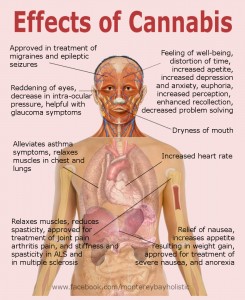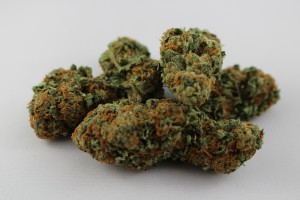Drugs – Cannabis
Cannabis
(Spliff, marijuana, ganja, weed, hash, skunk, blow, puff, ‘erb etc.)
Cannabis is naturally occurring substance that can act as a relaxant and mild hallucinogenic.
When smoked, the effects are usually felt fairly quickly with people feeling more relaxed, happy and generally laid back.
Strong cannabis can also lead to pointless giggling, loss of inhibitions and an enhanced appreciation of music and colours.
Marijuana has also been reported to ease the pain, nausea and vomiting in advanced stages of cancer, AIDS and other serious illnesses.
Like most drugs, the effects of the drug can vary wildly from one person to another, with factors like where you are, who you’re with and your general state of mind all influencing the experience.
Most cannabis is pretty mild, although recent varieties such as skunk, northern lights and purple haze can have a very strong – and sometimes hallucinogenic – effect.
Cannabis can be smoked with or without tobacco, filtered through water, cooled or inhaled using all manner of drug paraphernalia, or simply eaten. If eaten, it’s hard to calculate when it will take effect – especially if you’ve wolfed down a Billy Bunter sized Veggie burger beforehand.
The physical effects of too much dope can result in bloodshot eyes, a dry mouth and sloth-like reflexes and some people have reported feeling anxious and paranoid after a heavy session.
Side effects:
For many, smoking dope is as natural and everyday as a brew of hot tea, and they find the drug helps make their life a little less stressful without unduly affecting their judgement or abilities.
For others it can have quite the opposite effect, turning ordinary folk into unbearable, spaced out, lazy hippies. A night of industrial strength spliffing can transform you into a giggling oaf who will burst into laughter at wholly unamusing incidents and find deep intellectual depth in the Spice Girls’ lyrics.
Your trousers and sofa will become riddled with burn marks from dropped spliffs, and you will have to face the regular dilemma of being hit with the munchies at 3am only to find that you were too out of it to get the shopping in.
This can result in regular users turning into lazy gits whose crap diet turns their body into a most unattractive proposition.
Health risks:
Most of the health risks associated with cannabis are those linked with the tobacco it’s usually smoked with. There have been suggestions that there is an extremely low risk of developing bronchitis or lung cancer from smoking cannabis resin by itself, although a $2 million study by the National Toxicology Program in the US “found absolutely no evidence” in these claims.
The acute toxicity of cannabis and the cannabinoids is very low; no-one has ever died as a direct and immediate consequence of recreational or medical use.
Official statistics record two deaths involving cannabis (and no other drug) in 1993, two in 1994 and one in 1995 but these were due to inhalation of vomit. Animal studies have shown a very large separation (by a factor of more than 10,000) between pharmacologically effective and lethal doses.
Check out The House of Lords Report on Smoking Pot. See also Medicinal Cannabis Project and ‘Cannabis cleared – with a warning’
Although it is widely accepted – even in most Government and legal circles – that the occasional use of cannabis is most certainly no more dangerous than socially accepted drugs like alcohol and tobacco, possession still remains an offence in most countries.
Update 2002:
The main findings from an official report from the Advisory Council on the Misuse of Drugs (UK) are:
- High use of cannabis is not associated with major health problems for individuals or society.
- Occasional use of cannabis is only rarely associated with significant problems in otherwise healthy individuals, with the main worry being impaired control of your movements. It can also disrupt the control of blood pressure and increase the risk of fainting. However, occasional use can pose significant dangers for those with heart and circulation disorders and for those with schizophrenia.
- Regular heavy use of cannabis can result in dependence but its addictive potential is far less than amphetamines, tobacco or alcohol.
- Cannabis impairs mental functions such as attention, memory and performance and so can be dangerous for drivers and those who operate heavy machinery but, unlike alcohol, it does not increase risk-taking behaviour.
- The birth weight of children whose pregnant mothers smoked joints might be lower than expected due to carbon monoxide in the smoke. They also run a small risk of minor birth defects.
- Cannabis is less harmful than other class B substances including amphetamines, barbiturates or codeine-like compounds.
Detection periods:
Cannabis can be detected in the urine up to 2-7 days after casual use and up to 30 days after heavy use.
The Law:
As of 26th January 2009, Cannabis was reclassified as a Class B drug with a maximum prison term for possession rising from two to five years.
Special note:
Urban75: This site is all about harm reduction. We realise that some people will take drugs no matter what advice they are given. This guide is to be for information purposes only. It is not medical advice. If you are being coerced into taking drugs, or are in any doubt about taking a substance, our advice is to always refuse.
Source: Urban75
Journalist Poppy Begum explores the underground world of medicinal cannabis in the UK, meeting seriously ill people who believe weed is curing them. But by resorting to this illegal and unregulated drug, what risks are they all taking?






